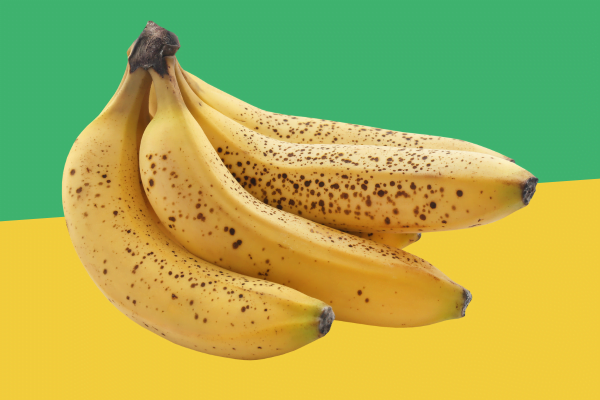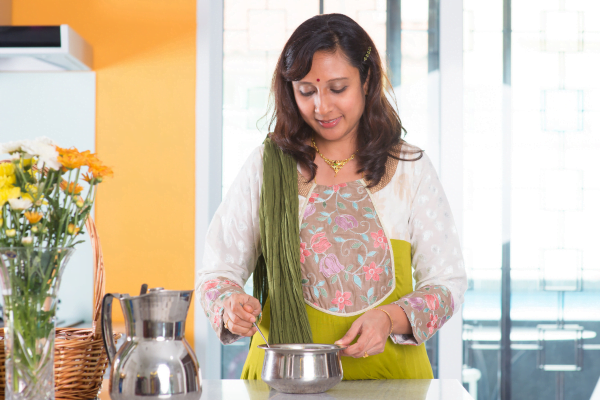Glycaemic index (GI) and glycaemic load (GL) are important in diabetes management. They help in making good food choices and also help in controlling blood sugar levels. Including low GI and GL foods not only helps in managing glucose levels but also provides consistent energy, and reduces insulin resistance. The body’s response to GI and GL varies greatly.
Let us understand what is glycaemic index and glycaemic load. This will help you improve blood glucose and also lose weight.
What is glycaemic index and glycaemic load?
Glycaemic index is the measure of the rate at which food when ingested can alter blood sugar levels. GL includes GI and the amount of carbohydrates. Both GI and GL calculate the impact of carbohydrates on insulin resistance, blood sugar, and other abnormal metabolic markers.
What are the benefits of using low GI and GL food?
Choosing foods that are low in GI and GL has several benefits. Individuals who want to manage their blood sugar levels, maintain a healthy weight, or would like to lose weight should understand the concept of low GI and GL.
- Consuming foods that have low GI has been shown to provide steady energy and also prevent depletion of energy and maintain energy levels throughout the day. This helps reduce fatigue and improves overall productivity.
- Low GI foods reduce between snacking and overeating by making one feel full and satiated. Consuming low-GI foods can help in weight loss.
- They help reduce the risk of cardiovascular diseases, control blood pressure, and improve lipid profiles. This leads to better heart health.
- Consuming various foods that are low in GI, contributes to a balanced and nutritious diet.
- When blood sugar levels are maintained, it improves mood, cognitive function, concentration mood swings and enhances mental clarity.
How does opting for low GI and low GL help in diabetes?
As explained above GI and GL, have beneficial effects for managing blood sugar levels. When consuming low-GI food, it takes longer time to digest than food that is high in carbohydrates and in turn, it releases low levels of glucose to the blood. This slow release of glucose to the blood helps in improving insulin resistance.
The fibre hypothesis: It is an extension of the GI concept. It suggests that fibre reduces the rate of nutrient influx from the gut. Fibre provides increasing satiety and also reduces snacking in between. This helps in stabilising blood sugar levels in individuals with diabetes.
Having a balanced diet that includes whole grains, lean proteins, vegetables, and fruits helps in achieving all these benefits.
How cooking alters the GI and GL of food?
Studies have found that the GI and GL of food can be altered with different cooking methods.
Food processing
Food processing has a great impact on altering GI and GL. In processing of grains such as milling wheat, rice, and other pulses, the outer layer husk is removed and the grains are polished. This leads to some fibre and nutrient loss.
Powdering of grains can also result in the loss of fibre and other nutrients. This loss of fibre and nutrients increases the GI content of the food.
Milling and grinding of the grains lead to a decrease in particle sizes, which affects the cooking time.
The finely ground grains gelatinise faster and this increases the GI.
Fruit juices are high in GI because the pulp is removed. The pulp contains all the nutrients and fibre, by removing the pulp all nutrients and fibre are lost in turn it increases GI.
Food additives also affects GI.
Canning, preservation, and freezing increase the GI content of food.
Thawing of food increases sugar availability and increases GI.
It is important to read the food labels and make good dietary choices.
Cooking time
Studies have shown that cooking time can affect the GI and GL of food.
Cooking foods high in carbohydrates increases the GI. Cooking for a long time can increase the gelatinisation process by making carbohydrates more readily available and digesting the food easily.
Overcooking food can make the texture soft, and easier to digest and it potentially increases GI. The GI of food is directly proportional to the cooking time of food.
Sweet potato and other roots and tubers increase the starch availability, and overcooked food that has high starch increases GI.
Protein and fat in food also have an impact on GI.
Cooking method
Cooking has adverse effects on GI. Cooking alters GI and GL by gelatinised starches, and food structure, affecting fibre content and forming resistant starch.
Fibre content is reduced in overcooked and refined food, but the GI is reduced in foods that are cooled and reheated food.
Maillard browning reaction (reaction between protein and sugars) affects the digestibility of carbohydrates, whereas fermentation affects the composition of carbohydrates. The impact of GI and GL can vary depending on the type of cooking method used.
Food pairing
Combining different categories of foods influences the GI of the meal. To reduce the GI of the food, it can be combined with other categories of food. Protein, fat, and fibre-rich foods can be combined with carbohydrate-rich food.
Choosing low-GI foods, balancing carbohydrates, timing carbohydrate intake, and avoiding excessive portion sizes, all these strategies can help moderate the rise in blood sugar levels.
The increased amount of cheese added to the base of pizza slows down the absorption of carbohydrates, which in turn reduces GI. However, the high amount of cheese may not be good for your health.
Cooling and reheating
Cooling and reheating food can alter the GI and GL due to the formation of resistant starch. The resistant starch takes time to digest in the small intestine, it releases glucose slowly into the blood and has a lower impact on blood sugar levels.
The starch remains resistant to heating and reheating, and the GI and GL are not altered. This process can be applied to rice, pasta, and potatoes, but not all starchy foods respond in the same way. It is recommended in managing diabetes that individuals eat food that is cooled and reheated.
Mashing
Foods that are high in carbohydrates have a high GI due to their surface area and are easy to digest. To maintain the GI content of mashed food can be by cooling it or reheating it. It can also be managed by combining other food components that are rich in protein and healthy fats.
Ripeness
The degree of ripeness in fruits has an impact on GI and GL. If a fruit is overripe, the sugar content is high and the GI and GL of the fruit are also high. The ripeness of the fruit has a direct effect on the GI and GL, this is due to the presence of sugar content mainly fructose. Foods that are high in fructose have a higher GI.
In ripening the starch composition is altered, and complex carbohydrate is broken down which makes it easier for digestion all these factors influence the GI and GL. Fruits that contain resistant starch have a moderating effect on the GI.
Therefore it is important to check the ripeness of the fruits before consuming them. It is recommended to have fruits unripened to maintain the blood sugar levels in individuals with diabetes.

GI AND GL OF FOODS
(source: Diet Metrics – Handbook of Food Exchanges by Meenakshi Bajaj; Foster-Powell et al., 2002; Atkinson et al., 2008)
| Glycemic Index | Glycemic Load | |
| Low | 55 or less | <10 |
| Medium | 56-69 | 11-19 |
| High | 70 or more | >20 |
| Raw Food Item | Glycemic Index | Glycemic Load |
| Fruits | ||
| Apple (big) | 36 | 5 |
| Cherries | 22 | 3 |
| Peach | 28 | 2 |
| Pears | 38 | 4 |
| Strawberry | 40 | 1 |
| Grapes, seeded, green | 43 | 5 |
| Orange, pulp | 45 | 5 |
| Kiwifruit | 47 | 6 |
| Semi ripen banana | 48 | 11 |
| Cereals and Pulses | ||
| Bengal gram dal | 11 | 4 |
| Soya bean, brown | 16 | 2 |
| Kidney beans | 19 | 5 |
| Rajmah | 19 | 5 |
| Chickpea | 28 | 8 |
| Bengal gram | 42 | 12 |
| Rice (white, Boiled) | 43 | 16 |
| Green gram | 45 | 12 |
| Barley | 48 | 20 |
| Bajra | 49 | 25 |
| Maize, tender, sweet | 52 | 8 |
| Pea green | 54 | 4 |
| Vegetables | ||
| Cauliflower | 6 | 0 |
| Lettuce | 7 | 0 |
| Cabbage, green | 10 | 0 |
| Capsicum, green | 10 | 0 |
| Onion, small | 10 | 1 |
| Broccoli, raw | 10 | 1 |
| Spinach | 12 | 0 |
| Tomato, ripe | 15 | 0 |
| Carrot, orange | 16 | 1 |
| Mango, green, raw | 51 | 6 |
| Nuts and Seeds | ||
| Groundnut, roasted | 14 | 2 |
| Walnut | 15 | 2 |
| Apricots | 32 | 10 |
| Flaxseeds | 36 | 4 |
| Dates (Processed) | 36 | 16 |
| Milk and Milk Products | ||
| Skimmed milk | 37 | 1 |
| Milk, buffalo | 39 | 3 |
| Food Item | Glycemic Index | Glycemic Load |
| Cereals and Pulses | ||
| Dhokla | 33 | 6 |
| Cheela, bengal gram | 36 | 10 |
| Cheela, green gram | 38 | 10 |
| Wheat chapati | 52 | 21 |
| Sweet corn | 53 | 17 |
| Porridge, rolled oats | 55 | 13 |
| Muesli | 57 | 11 |
| Wheat roti | 66 | 10 |
| Dosa | 66 | 26 |
| Millet porridge | 67 | 25 |
| Brown rice, boiled | 68 | 16 |
| Semolina upma | 68 | 28 |
| Pongal | 68 | 35 |
| Poori | 70 | 28 |
| Rajmah, soaked & steamed | 70 | 17 |
| White rice boiled | 73 | 29 |
| Whole wheat bread | 74 | 11 |
| Instant oats porridge | 79 | 17 |
| Corn flakes | 81 | 21 |
| Vegetables | ||
| Carrots, boiled | 39 | 3 |
| Vegetable soup | 48 | NA |
| potato , french fries | 63 | 22 |
| Potato, boiled | 78 | 14 |
| Potato, instant mash | 87 | 17 |
| Fruits | ||
| Apple juice | 41 | 11 |
| Orange juice | 50 | 12 |
| Snacks | ||
| Chocolate | 40 | 4 |
| Potato chips | 56 | 11 |
| Soft drink/ soda | 59 | NA |
| Popcorn | 65 | 8 |
Nutritional claims of GI and GL
Nutritional information provided on the label helps consumers to make informed dietary choices. Traditional claims and labelling schemes are being developed around the globe. Constant research in the food industry helps in developing new health claims which leads to new label claims. Mention of GI and GL content of food helps consumers to make good food choices. Many developed countries include the levels of GI and GL in food and have a specified logo for indicating the GI and GL.
Australia and New Zealand

Low – 55 or <55
Medium – 56 – 69
High – 70 or >70
South Africa

Low GI – 0 to 55
Intermediate GI – 56 to 69
High GI – 70 or >70
Asian Countries
China, Cambodia, Japan, Korea, Malaysia, Philippines, Taiwan, Thailand and Vietnam
No regulation related to GI claim.
India
Low GI claim permitted – FSSAI (India’s food regulation body). It has laid down standards for the determination of food glycaemic index.

Indonesia
In 2011 claim regulation, a test method protocol for GI was included. It was later removed in 2016.
Singapore
Under the Healthier Choice Symbol scheme there is a low GI claim permitted for several food categories.

North American countries
Canada
In 2017, Diabetes Canada launched a Glycaemic Index Education Portal, The Glycaemic Index Educator’s handbook, a Glycaemic Index Food guide with a stop light system, and Glycaemic Index Food Cards, but there are no recent updates.
USA
Many GI certification programs such as the GI symbol program of the Glycaemic Index Foundation (New Zealand, Australia) are available in the USA. The glycaemic index is not defined by the Food Drug Administration (A governmental body responsible for protecting public health). FDA has not pre-approved participation in these certification programs and no action is taken against manufacturers who use low GI logos.
European countries
France
There is insufficient evidence to indicate the GI of food content based on health benefits for the general population and its use of GI labelling is prohibited.
Germany
No recommendations are made.
Nordic Countries
There is evidence that information provided on labels about GI had a positive impact on overweight and obese individuals. This was recorded by The Nordic Nutrition Recommendation in 2012.
The United Kingdom
The Scientific Advisory Committee on Nutrition in 2015, published an in-depth opinion on carbohydrates and health. The committee also concluded that it is not possible to determine the cause-effect relationships for outcomes based on variation in the diet containing GI and GL.
It is important to understand the GI and GL of various foods and their effect on blood sugar levels. Make good dietary choices by choosing the foods that are low in GI and GL by going through the table on GI and GL values for various foods both raw and processed. Cook food through corrective methods, include protein and healthy fats in your diet to have a balanced diet, and maintain the sugar levels in individuals with diabetes.
Kripa N,
Senior Clinical Dietitian, Simplyweight













